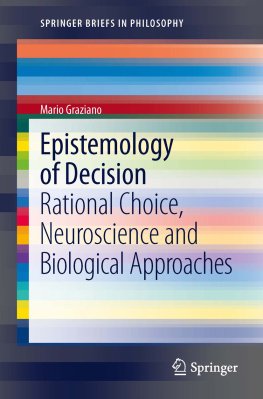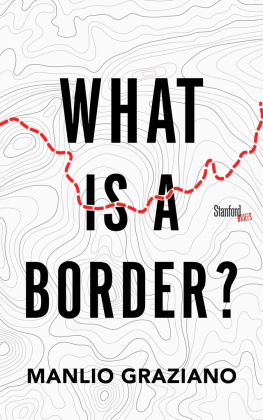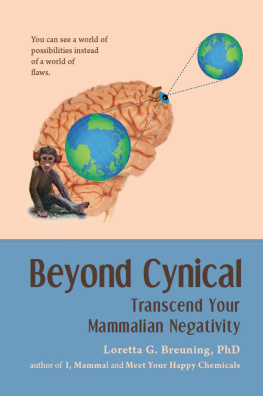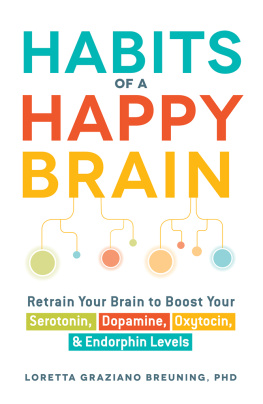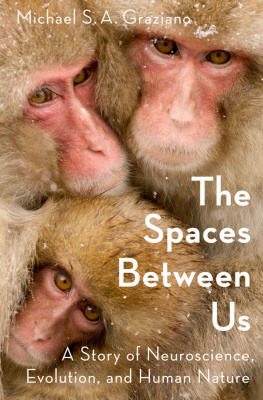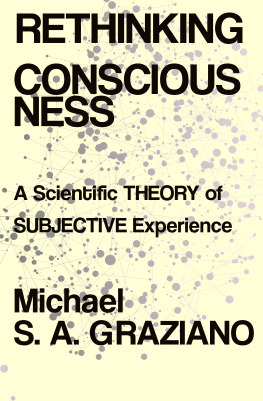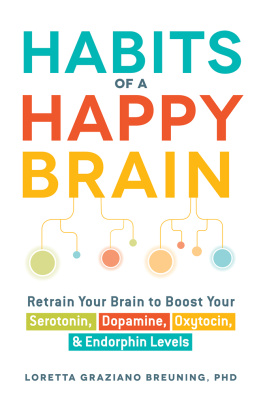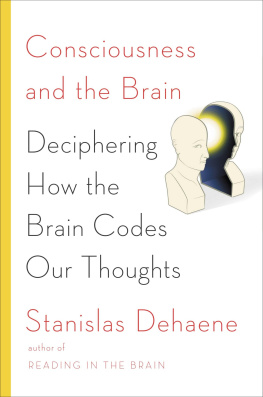Graziano - Consciousness and the Social Brain
Here you can read online Graziano - Consciousness and the Social Brain full text of the book (entire story) in english for free. Download pdf and epub, get meaning, cover and reviews about this ebook. City: Oxford, year: 2013;2015, publisher: Oxford University Press, genre: Computer. Description of the work, (preface) as well as reviews are available. Best literature library LitArk.com created for fans of good reading and offers a wide selection of genres:
Romance novel
Science fiction
Adventure
Detective
Science
History
Home and family
Prose
Art
Politics
Computer
Non-fiction
Religion
Business
Children
Humor
Choose a favorite category and find really read worthwhile books. Enjoy immersion in the world of imagination, feel the emotions of the characters or learn something new for yourself, make an fascinating discovery.

- Book:Consciousness and the Social Brain
- Author:
- Publisher:Oxford University Press
- Genre:
- Year:2013;2015
- City:Oxford
- Rating:3 / 5
- Favourites:Add to favourites
- Your mark:
- 60
- 1
- 2
- 3
- 4
- 5
Consciousness and the Social Brain: summary, description and annotation
We offer to read an annotation, description, summary or preface (depends on what the author of the book "Consciousness and the Social Brain" wrote himself). If you haven't found the necessary information about the book — write in the comments, we will try to find it.
Graziano: author's other books
Who wrote Consciousness and the Social Brain? Find out the surname, the name of the author of the book and a list of all author's works by series.
Consciousness and the Social Brain — read online for free the complete book (whole text) full work
Below is the text of the book, divided by pages. System saving the place of the last page read, allows you to conveniently read the book "Consciousness and the Social Brain" online for free, without having to search again every time where you left off. Put a bookmark, and you can go to the page where you finished reading at any time.
Font size:
Interval:
Bookmark:

SPECULATIVE EVOLUTIONARY TIMELINE OF CONSCIOUSNESS
The theory at a glance: from selective signal enhancement to consciousness. About half a billion years ago, nervous systems evolved an ability to enhance the most pressing of incoming signals. Gradually, this attentional focus came under top-down control. To effectively predict and deploy its own attentional focus, the brain needed a constantly updated simulation of attention. This model of attention was schematic and lacking in detail. Instead of attributing a complex neuronal machinery to the self, the model attributed to the self an experience of Xthe property of being conscious of something. Just as the brain could direct attention to external signals or to internal signals, that model of attention could attribute to the self a consciousness of external events or of internal event. As that model increased in sophistication, it came to be used not only to guide ones own attention, but for a variety of other purposes including understanding other beings. Now, in humans, consciousness is a key part of what makes us socially capable. In this theory, consciousness emerged first with a specific function related to the control of attention and continues to evolve and expand its cognitive role. The theory explains why a brain attributes the property of consciousness to itself, and why we humans are so prone to attribute consciousness to the people and objects around us. Timeline: Hydras evolve approximately 550 million years ago (MYA) with no selective signal enhancement; animals that do show selective signal enhancement diverge from each other approximately 530 MYA; animals that show sophisticated top-down control of attention diverge from each other approximately 350 MYA; primates first appear approximately 65 MYA; hominids appear approximately 6 MYA; Homo sapiens appear approximately 0.2 MYA
CONSCIOUSNESS AND THE SOCIAL BRAIN
Michael S. A. Graziano


Oxford University Press is a department of the University of Oxford.
It furthers the Universitys objective of excellence in research, scholarship,
and education by publishing worldwide.
Oxford New York
Auckland Cape Town Dar es Salaam Hong Kong Karachi
Kuala Lumpur Madrid Melbourne Mexico City Nairobi
New Delhi Shanghai Taipei Toronto
With offices in
Argentina Austria Brazil Chile Czech Republic France Greece
Guatemala Hungary Italy Japan Poland Portugal Singapore
South Korea Switzerland Thailand Turkey Ukraine Vietnam
Oxford is a registered trademark of Oxford University Press in the
UK and certain other countries.
Published in the United States of America by
Oxford University Press
198 Madison Avenue, New York, NY 10016
Oxford University Press 2013
All rights reserved. No part of this publication may be reproduced, stored in a retrieval system, or transmitted, in any form or by any means, without the prior permission in writing of Oxford University Press, or as expressly permitted by law, by license, or under terms agreed with the appropriate reproduction rights organization. Inquiries concerning reproduction outside the scope of the above should be sent to the Rights Department, Oxford University Press, at the address above.
You must not circulate this work in any other form
and you must impose this same condition on any acquirer.
Library of Congress Cataloging-in-Publication Data
Graziano, Michael S. A., 1967
Consciousness and the social brain / Michael S.A. Graziano.
pages cm
Includes bibliographical references and index.
ISBN 9780199928644
1. Consciousness. 2. Brain. I. Title.
BF311.G692 2013
153dc23
2012048895
9 8 7 6 5 4 3 2 1
Printed in the United States of America
on acid-free paper
For Sabine
Many thanks to the people who patiently read through drafts and provided feedback. Thanks in particular to Sabine Kastner, Joan Bossert, and Bruce Bridgeman. At least some of the inspiration for the book came from Mark Ring, whose unpublished paper outlines the thesis that consciousness must be information or else we would be unable to report it. Some of the material in this book is adapted from a previous article by Graziano and Kastner in 2011.
CONSCIOUSNESS AND THE SOCIAL BRAIN
THE THEORY
The Magic Trick
I was in the audience watching a magic show. Per protocol a lady was standing in a tall wooden box, her smiling head sticking out of the top, while the magician stabbed swords through the middle.
A man sitting next to me whispered to his son, Jimmy, how do you think they do that?
The boy must have been about six or seven. Refusing to be impressed, he hissed back, Its obvious, Dad.
Really? his father said. You figured it out? Whats the trick?
The magician makes it happen that way, the boy said.
The magician makes it happen. That explanation, as charmingly vacuous as it sounds, could stand as a fair summary of almost every theory, religious or scientific, that has been put forward to explain human consciousness.
What is consciousness? What is the essence of awareness, the spark that makes us us? Something lovely apparently buried inside us is aware of ourselves and of our world. Without that awareness, zombie-like, we would presumably have no basis for curiosity, no realization that there is a world about which to be curious, no impetus to seek insight, whether emotional, artistic, religious, or scientific. Consciousness is the window through which we understand.
The human brain contains about one hundred billion interacting neurons. Neuroscientists know, at least in general, how that network of neurons can compute information. But how does a brain become aware of information? What is sentience itself? In this book I propose a novel scientific theory of what consciousness might be and how a brain might construct it. In this first chapter I briefly sketch the history of ideas on the brain basis of consciousness and how the new proposal might fit into the larger context.
The first known scientific account relating consciousness to the brain dates back to Hippocrates in the fifth century B.C. At that time, there was no formal science as it is recognized today. Hippocrates was nonetheless an acute medical observer and noticed that people with brain damage tended to lose their mental abilities. He realized that mind is something created by the brain and that it dies piece by piece as the brain dies. A passage attributed to him summarizes his view elegantly:
Men ought to know that from the brain, and from the brain only, arise our pleasures, joys, laughter and jests, as well as our sorrows, pains, griefs and tears. Through it, in particular, we think, see, hear, and distinguish the ugly from the beautiful, the bad from the good, the pleasant from the unpleasant.
The importance of Hippocratess insight that the brain is the source of the mind cannot be overstated. It launched two and a half thousand years of neuroscience. As a specific explanation of consciousness, however, one has to admit that the Hippocratic account is not very helpful. Rather than explain consciousness, the account merely points to a magician. The brain makes it happen. How the brain does it, and what exactly consciousness may be, Hippocrates left unaddressed. Such questions went beyond the scope of his medical observations.
Next pageFont size:
Interval:
Bookmark:
Similar books «Consciousness and the Social Brain»
Look at similar books to Consciousness and the Social Brain. We have selected literature similar in name and meaning in the hope of providing readers with more options to find new, interesting, not yet read works.
Discussion, reviews of the book Consciousness and the Social Brain and just readers' own opinions. Leave your comments, write what you think about the work, its meaning or the main characters. Specify what exactly you liked and what you didn't like, and why you think so.

